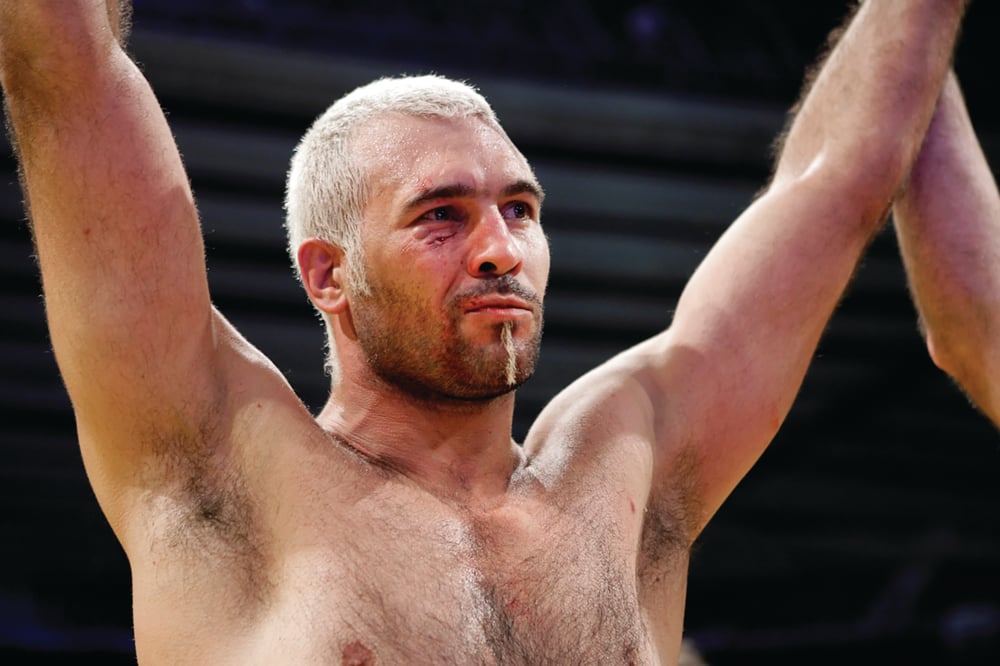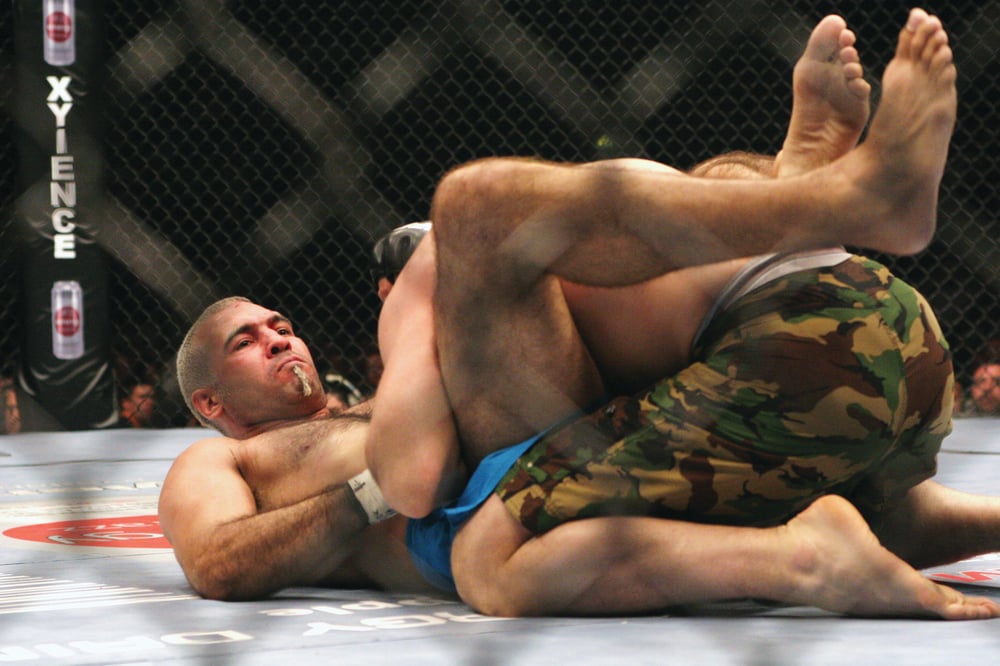
Issue 060
March 2010
When Elvis Sinosic walked to the Octagon in the MEN Arena in Manchester, England, the chorus of jeers that rang through the crowd didn’t rattle him. He had been in this situation many times before: far from his home in Sydney, Australia, and fighting in his enemy’s backyard. All he could do was raise his left arm straight over his head, pivot to wave to the crowd and ready himself for the task at hand.
As far as Australian MMA is concerned, there are a lot of ‘firsts’ associated with Sinosic. He is the first Australian to fight, win and get a title fight in the UFC. Come February 2010, another first will be added to his resume: Sinosic faces Chris Haseman on the undercard of UFC 110, the first event the Las Vegas-based mixed-martial-arts juggernaut will hold ‘down under’. Fighting for the UFC in his hometown of Sydney would be a fitting bookend to his career thus far as the town was also the site of his first MMA fight in 1997. “This Australian UFC event would be my first opportunity to fight in a world-class event where I have the hometown advantage,” he says.
Sinosic had been training Brazilian jiu-jitsu for two years when he flipped through a local martial arts magazine and saw something that piqued his interest: An ad for a competition that would be known as ‘Caged Combat’. “It was originally termed the Australasian UFC,” Sinosic says. “At the time, we didn’t realize that there was no connection [to the UFC], they were just using the name to sell themselves. But it was Australia’s first professional cage-fighting event, and I thought to myself, ‘I would really like to test myself in that sort of environment.’” Sinosic quickly won his first match of the tournament by TKO before losing via ‘chin to eye’ submission, a relic of the no-holds-barred early days of MMA. The loss was to fellow Aussie Chris Haseman, who Sinosic will fittingly meet at UFC 110.
Elvis made his next appearance at the Australian Vale Tudo Championships, winning their heavyweight title. The ring, he remembers, was hardly a ring at all. To give the fights a raw and gritty appearance, the organizers had replaced the ropes with chains. “One of the fighters in the event actually fell back on the bottom ‘rope’ with their forearm,” Sinosic says. “And, of course, because there’s no give, he broke his arm.”
Elvis says that he and the other competitors of the day simply brushed off these odd and occasionally dangerous competitive environments. “Back then, we didn’t know any different, you know?” he continues. “You didn’t think too much about it like, ‘I don’t want to take this match because they’ve got stomps.’ That is just the way it was, it’s just made me never worry about the rules or the environment or who I’m facing, because when you’ve faced it all, everything else is just a little bit easier.”
The UFC contacted Sinosic as a late-notice replacement to face Jeremy Horn at UFC 30, the first event run under the control of Zuffa. “The UFC contacted me because Jeremy had lost to Frank [Shamrock] by submission, and I had gone the distance with Frank but he couldn’t put me away. So the UFC kind of felt that if Jeremy beat me, it would legitimize him as earning a shot toward [then light heavyweight champion] Tito Ortiz,” Sinosic says. “There was always the possibility that I’d beat Jeremy, but I don’t think anyone actually, really believed I would.” Instead, Sinosic defeated Horn with a tight triangle armbar just under three minutes into the first round. On top of the $10,000 he made for his effort, Sinosic earned a title shot against Ortiz.
The thrill of victory would be short-lived: Sinosic lost the bout to Ortiz as well as subsequent fights against the late Evan Tanner and then Renato Sobral, before leaving the organization. He went 2-1-1 in his next four bouts before returning to the UFC in October 2005 as – once again – a late replacement to face Forrest Griffin in The Ultimate Fighter winner’s sophomore UFC bout. “I was shocked that I even got booed at the Forrest fight!” Sinosic says with a laugh. “That was a shock simply because I wasn’t expecting it.” Sinosic landed a number of damaging blows in the exclusively stand-up affair before being put down by the future light heavyweight champion.

When he fought Michael Bisping at UFC 70 in Manchester, a year and a half later, it was the second time Sinosic was thrown in with a winner of The Ultimate Fighter. “‘Sacrificial lamb’ is probably a little more extreme than I would have put it, but yeah, I guess that’s kind of what it is, you know,” Sinosic says. “I am a tough test for a fighter: I’ve got strong grappling, I’ve got good striking and I’m well-rounded. As much as I’m put in as a sacrificial lamb, I think I’m also put in to test whether the fighter’s ready for that next level. The UFC knows that I’ll put on a good fight and give them a fight that really gets to showcase my skills as well as my opponent’s, so either way the fight looks good. And I want to beat them – I don’t just go in there thinking I’m going to make them look good or whatever. I’m there to try to stop them.”
In the two years since he last stepped into the cage, Sinosic has assumed a number of roles in the MMA sphere, including that of a defender of the sport in his homeland. In October 2009, The Sydney Morning Herald ran a story that castigated the sport and made false proclamations of its brutality. Shortly after its publication, Sinosic authored a critique of the article that quickly made the rounds throughout the Internet. Fortunately, he says, the general public has a better understanding of the sport than the media. “We’re probably at that stage where the United States was just before The Ultimate Fighter broke,” he says. “I think the UFC coming to Sydney is what we need to push it over the edge and get some mainstream recognition.”
Retirement remains a far-off notion for Elvis Sinosic, who turns 39 in February. “When I first started fighting, I thought to myself that around 30 I’ll start to wind my career down. Then as I got to 30, I thought about 32, 33. Then when I got to 32, I was thinking about 35. Even though I think I’ll wind it down, my body and my mind keep going – and who knows when I’m actually going to stop?”











